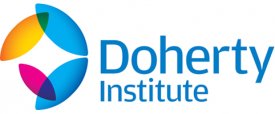20 Aug 2018
Insights from the Australasian Viral Hepatitis Conference: Yianni Droungas
A contingent of Doherty Institute scientists and epidemiologists travelled to Adelaide for the 11th Australasian Viral Hepatitis Conference. PhD student, Yianni Droungas was selected to present his research to delegates. Here, he writes about his experiences and insights of the conference.
The 11th Australasian Viral Hepatitis Conference attracted people from all disciplines including clinicians, social workers, non-profit organisation CEOs, patients, and researchers, with a sole theme: ‘NO ONE LEFT BEHIND’. On an early, cold Monday morning at the Adelaide Conference centre, aunty Georgina Williams welcomed over 500 delegates to the Kaurna Country and officially opened the conference by performing one of her ancestors’ rituals in the native, Indigenous language.
All speakers were well-prepared to engage and highlight the need for action to combat hepatitis B and C and reach elimination targets by 2030. Associate Professor Kylie Valentine advocated that social inequality and poverty, which significantly account for millions of hepatitis B and hepatitis C infected individuals worldwide, are political problems that require a technocratic approach. I was extremely impressed by Associate Professor Sunil Solomon, a physician and PhD from the United states, currently working on a project in his native country, India, where in New Delhi, the HepB prevalence is 45 per cent and the hepatitis C prevalence is 80 per cent; yet up to 50 per cent of people have never heard of the term hepatitis. Sunil puts himself at the front line to engage with the community and help them seek proper screening and treatment in a tremendous effort to eliminate hepatitis C.
Many courageous, infected individuals took the stage and presented their stories such as Anne, a hepatitis C patient – currently cured; who experienced all kinds of stigma and discrimination at her workplaces and struggled raising her two children whilst afraid to infect them via blood to blood transmission. Mohammed and his wife, refugees from Afghanistan, were diagnosed with hepatitis B and experienced discrimination by language interpreters. However, Mohammed’s efforts to improve his English language skills and communicate with doctors (who he trusted) directly, resulted in having two beautiful, healthy children, whilst Mohammed now works closely with non-profit organisations as a hepatitis B ambassador. Lastly, we heard Michael’s story, currently the President of the World Hepatitis Association (WHA), who was a hepatitis C patient – currently cured; whilst his wife lives with chronic hepatitis B/hepatitis D co-infection. Michael and the WHA work closely with the WHO to strengthen the patient voice, improve public health, eliminate the stigma around viral hepatitis, and ‘Find The Missing Millions’ that remain undiagnosed and contribute to the immense morbidity and mortality rates worldwide.
Our own Doherty Instite researchers had a strong presence at this conference. Ben Cowie’s group presented their fantastic achievements on the mapping and the epidemiology of viral hepatitis in Australia. Ms Vitina Sozzi’s (Revill Group) poster showed finding of genotype H generally associated to less severe liver disease, whilst Dr Margaret Littlejohn’s poster highlighted the deep sequence analysis results of a cohort of patients after cessation of treatment. Jennifer MacLachlan, the inaugural winner of the ASHM Levinia Crooks Emerging Leader in Viral Hepatitis Award, accepted it with a very inspiring speech and promised to do this award justice.
In the afternoon, the cohort was split into three concurrent sessions. In the session I attended, ‘Testing, Treating and Cancer Screening’, Professor Peter Revill presented the significance of spliced variants and their association to cancer. Then, I had the honour to present my project in front of such diverse audience. Although very nervous, I somehow managed to keep my composure and talked about my project on targeting the hepatitis B e antigen (HBeAg) as an alternative therapeutic approach to find a cure for the 290 million chronic patients around the world.
Moreover, I had the chance to hear many amazing speakers’ stories about Indigenous health, hepatitis in correctional facilities, people who inject drugs, men who have sex with men, and immigrant communities.
The day ended with a wine and cheese session provided by the organisers, where I had the opportunity to converse with some of the international speakers, as well as our own champions who put themselves at the front line and are directly involved in improving the lives of hepatitis-infected individuals, and the battle to eradicate the stigma around viral hepatitis.
Overall, this conference was much different to what I expected it to be. I felt extremely privileged and highly honoured to be one of the 500 delegates attending such a great conference so early in my career. The immense efforts of health professionals to improve lives, and the suffering patients go through: whether discrimination, financial hardship, mental health problems, or lack of education, has been an eye opener and has inspired me deeply to trying even harder than before to conduct meaningful research, which will not only be innovative and contribute to the scientific community, but to the impacted community as well.

